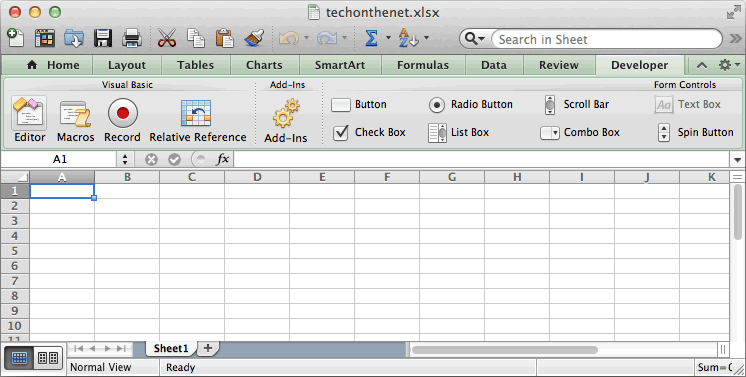-->
Control keyboard shortcuts in Excel for the web by overriding browser Keyboard shortcuts Quick tips for using keyboard shortcuts with Excel for the web You can find any command quickly by pressing Alt+Windows logo key+Q to jump to Tell Me, In Tell Me, you can just type a word or the name of a command you want (available only in Editing view). Aug 23, 2015 This is only happening with Excel. With Word and PowerPoint, a right click on the taskbar shows recent files and allows me to pin a file to the same window that appears on the taskbar with a right click. For Excel, the right click on the task bar shows 5 pinned files and no recent files. The 1st Taskbar above is an example of all Excel windows grouped together (the default setting). In this scenario I have 3 Excel workbooks open, but only one Taskbar button. The Taskbar below the 1st Taskbar above is an illustration of the same scenario except that each Excel window has its own button on the Taskbar. How to Change the Setting.
Note
Office 365 ProPlus is being renamed to Microsoft 365 Apps for enterprise. For more information about this change, read this blog post.
Symptoms
While using Word for Mac one or more Toolbars are missing and cannot be added.
Cause

This behavior can be caused by one of these things:
- The oval button in the upper-right corner of the document was clicked. This button 'toggles' display of toolbars on and off.
- There is an issue with the Normal template in Word.
- The toolbars or menus are modified.
Resolution
To resolve this problem, try the following methods.
Method 1: Make sure that tool bar display is not turned off
In the upper-right corner of the window click the oval button.
Note
When this button is clicked, it hides all the toolbars. A second click causes the toolbars to be displayed.
If the toolbars reappear, quit, and then restart Word to make sure that the appropriate toolbars are displayed.
If Method 1 did not resolve the problem, try Method 2.
Method 2: Reset the toolbars and menus in Word
You can reset the toolbars and menus in the Customize Toolbars and Menus option, any saved customization is removed, and all settings are reverted to the original default settings.
- Open Word.
- Go to View in the menu.
- Choose Toolbars.
- Select Customize Toolbars and Menus.
- Select Toolbars and Menus in the top of the Customize Toolbars and Menus window.
- Select the item in the list you want to reset (Menu Bar, Standard, Formatting).
- Click Reset.
- Click OK when getting prompt: 'Are you sure you want to reset the changes made...'
- Click OK.
Note
When View is missing from the menu, then you can also Control Click the Standard Toolbar and go to Customize Toolbars and Menus here.
If Method 2 did not resolve the problem, try Method 3.
Method 3: Create a new Normal template Note
When a new Normal template is created, any saved customization is removed, and all settings are reverted to the original default settings.
Step 1: Quit all programs
To quit active applications, follow these steps:
On the Apple menu, click Force Quit.
Select an application in the 'Force Quit Applications' window.
Click Force Quit.
Repeat the previous steps until you quit all active applications.
Warning
When an application is force quit, any unsaved changes to open documents are not saved.
When you are finished, click the red button in the upper-left corner and proceed to Step 2.
Step 2: Word 2008 and 2011: Move the Normal.dotm template file to the Trash
- Quit all Microsoft Office applications.
- On the Go menu, click Home.
- Open Library.
Note
The Library folder is hidden in MAC OS X Lion. To display this folder, hold down the OPTION key while you click the Go menu.
- Select the Application Support folder.
- Select the Microsoft folder.
- Open the Office folder.
- Open the User Templates folder.
- Move Normal.dotm to the Trash.
- Start Word, a new Normal.dotm template will be created when you choose Quit Word in the Word menu.
Note
When you had Word 2004 on your Mac previously and you now have Word 2008 or Word 2011, also check if the Word 2004 Normal file is present on the system, if so, trash this Normal template file as well.
Step 3: Word 2004: Move the Normal template file to the Trash
- Quit all Microsoft Office applications.
- On the Go menu, click Home.
- Select the Documents folder.
- Select the **Microsoft User Data **folder.
- Move Normal to the Trash.
- Start Word, a new Normal template will be created when you choose Quit Word in the Word menu.
If you have a sheet that contains confidential information, such as employee salaries, you can hide the values of those cells by using a custom number format.
Do any of the following:
Hide cell values
When you hide a value in a cell, the cell appears to be empty. However, the formula bar still contains the value.
Select the cells.
On the Format menu, click Cells, and then click the Number tab.
Under Category, click Custom.
In the Type box, type ;;; (that is, three semicolons in a row), and then click OK.
Show Badges On Taskbar Buttons
Display hidden cell values
Microsoft Excel Mac Taskbar Display Download
Select the cells.
On the Format menu, click Cells, and then click the Number tab.
Under Category, click General (or any appropriate date, time, or number format other than Custom), and then click OK.



